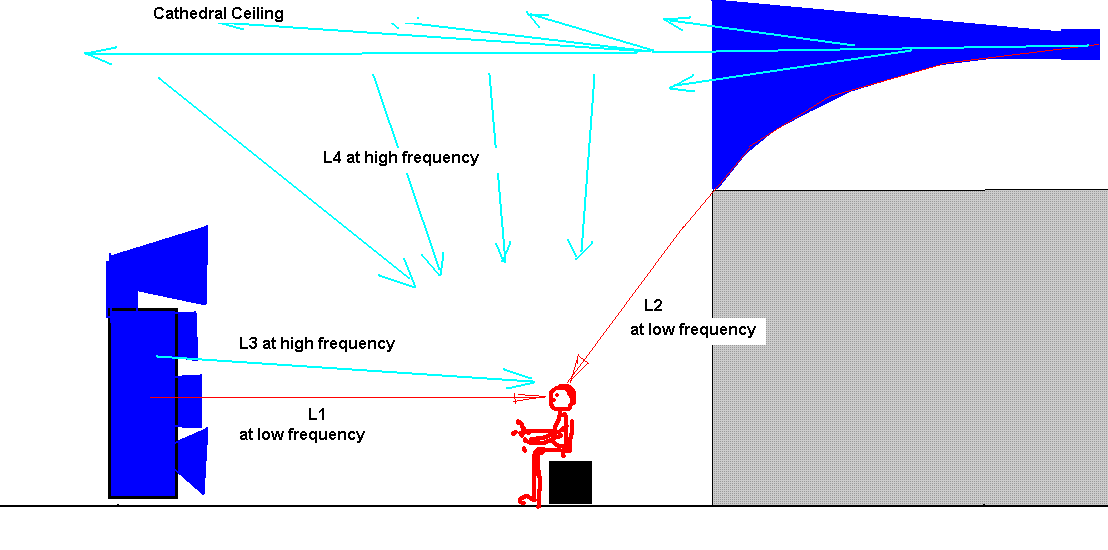Rerurn to Romy the Cat's Site
In the Forum: Horn-Loaded Speakers
In the Thread: Macondo’s Midbass Project – the grown up time.
Post Subject: Delays gradual self-regulation?Posted by Romy the Cat on: 8/11/2010
fiogf49gjkf0d
Thinking about the integration scenarios of my midbass horn I come to a realization that it highly possible that the horn in THIS room will do something very unique. I have wrote before that I was successful to set channels delayed but the delay was masking but the fact that echo frequency channels was delays in respect to a neighboring one and offset by frequency range. This way delays was not as single hit but speeded across the bandwidth and was much less annoying, if annoying at all. What I think is possible is that in my new room with my new midbass horn I might have a model where the exchange between frequency and delay will be super gradual and absolutely natural. I do not know how it will affect sound but it shall be very interesting. Let look at the proposed mechanic of the process:

Let pretend that wide bandwidth come from main speakers and from midbass horns. On the picture is the side view of my room with more or less right proportion. The LF do not propagate like light but they obey the pressure wave pattern, so the pressure fill all space at the same time and pressure rises at the shortest distance. So, at LF the L1 distance and L2 distance are identical – the horns are in perfect time alignment.
Now the frequency rises. The more it raises then more and more sound losing pressure wave pattern distribution and get directivity, like light. The sound at HF shots out of the horn but the horn very much not pointed to listener but sits way above. So, the HF are shooting in the opening of cathedral ceiling and then descend to listening spot as reflections (whatever were not killed by my sails). This HF sound will be delayed in regard to the reference arriving time but here is an interesting kink: the HF will be delay proportionally to bandwidth and he most important this dependency will be self-regulated. So, in my drawing the L3 will be never equal to L4, however the LF will be longer then L3 very smoothly in respect to the acting frequencies.
I guess it might be very interesting effect. The L4 will be of close way attenuated but I think they will be in play somehow. How effective will it be the time will show but if the impact of FH from my midbass horns will be not the same as amount FH from the horns. I am very confident in it.
Rgs, Romy the CatRerurn to Romy the Cat's Site